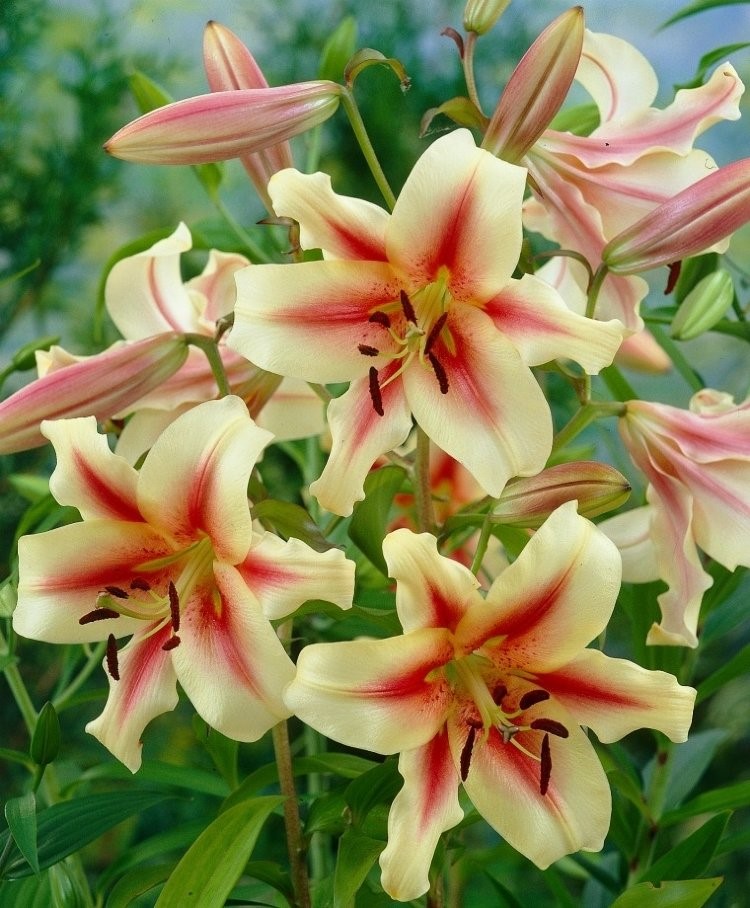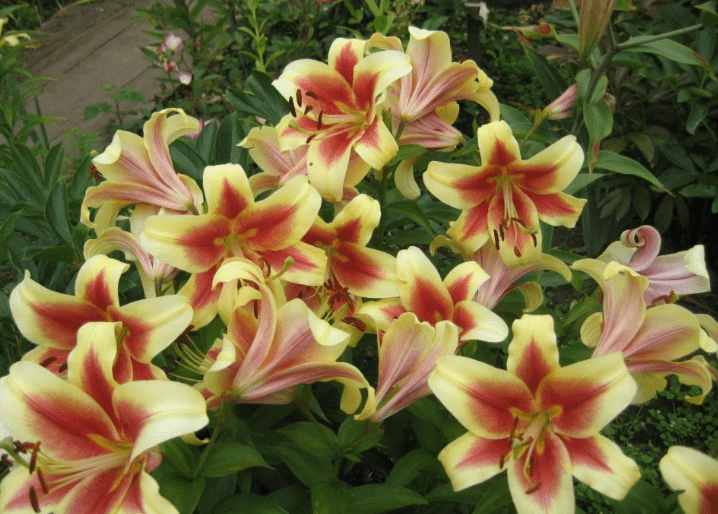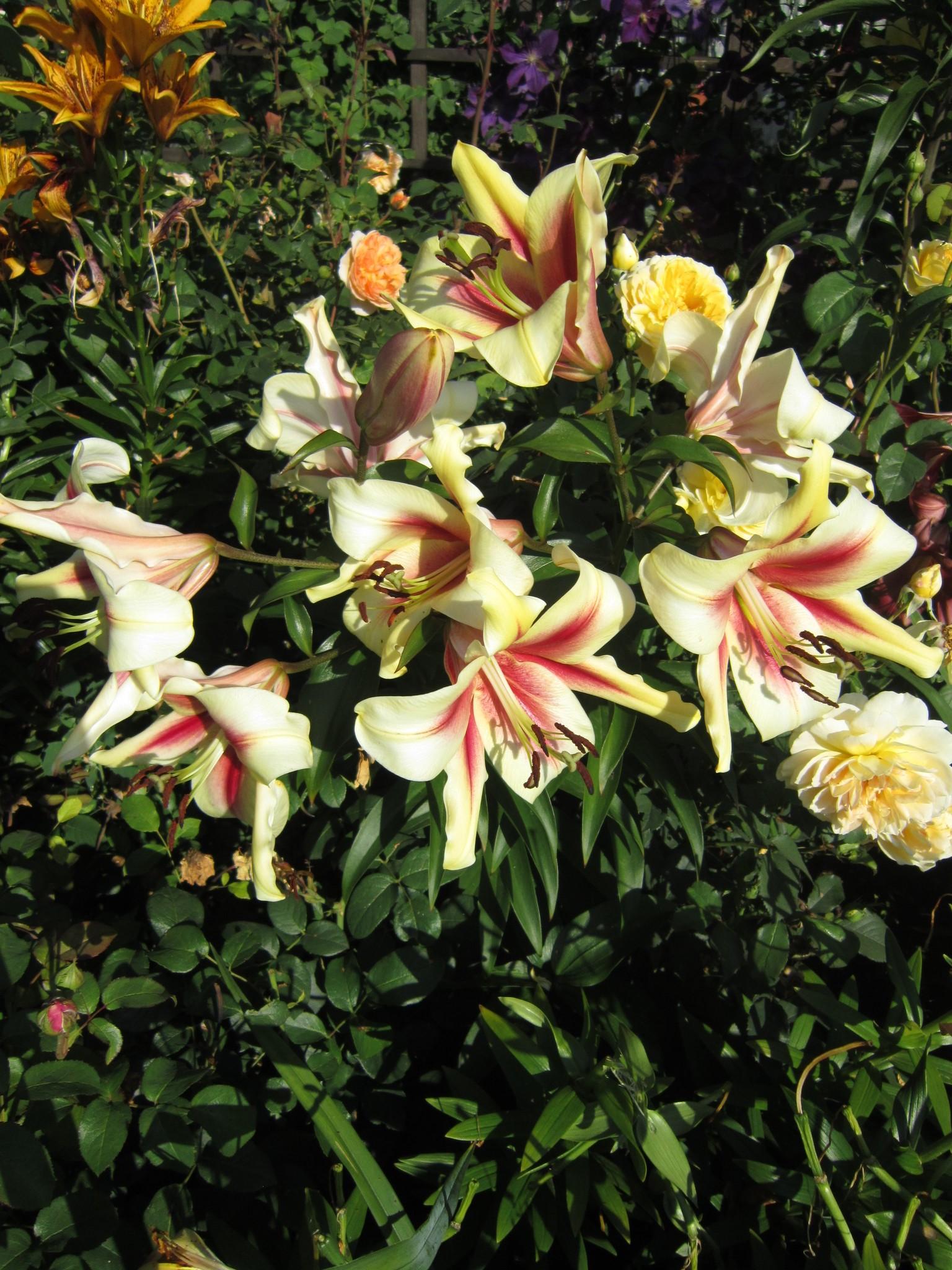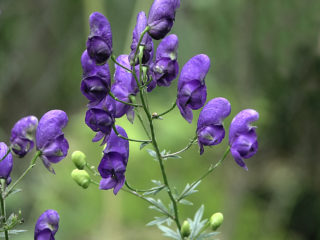Content
Among the gardens and parks, the Lavon lily has found a place for itself. This is a tubular variety of Liliaceae that has appeared relatively recently. The plant has unusual petals that have a contrasting transition from yellow to red.
History of selection
The Lavon variety appeared in Holland. The ancestors of the culture were the Trumpet and Oriental species, distinguished by colorful buds. The result of the crossing was a lush flower.

The culture has inherited the best qualities, including a pleasant aroma
Description of Lavon lily with photo
The culture has stable stems on which flower stalks rise. It is grown in all regions of the Russian Federation. Lily Lavon is an OT hybrid. The shoots are tough and green in color, which may be slightly golden or red at the base.

During the growing process, the plant may become ill with fusarium; affected tubers are difficult to save.
The height of the Lavon variety bush reaches 140-150 cm. When grown in fertile soil, the plant grows up to 2 m. Flower growers speak of the crop as fast-growing. In the third year of cultivation, it forms up to nine children, along with which shoots grow.
Lavon leaf blades are of medium length, more powerful at the base. They have a dark green matte surface.Cultivation does not cause problems for gardeners - everything speaks about the unpretentiousness of the Lavon lily.
The Lavon variety is a light-loving lily. When choosing a site, this must be taken into account. Direct sunlight with prolonged contact can cause burns. In addition, the flowers fade. The variety is resistant to precipitation.

Due to the rapid development, lily stems need support.
Features of flowering
In mid-summer, the Lavon variety begins to bloom petals. With proper agricultural technology, the period lasts up to two months. Up to 25-28 flowers with a pronounced scent are formed on one shoot. The diameter of the bud is 24 cm, which is the main advantage of the plant.
At first, the flowers are funnel-shaped. As they dissolve, they turn into a star. The petals are oval, hard to the touch, slightly moist, their ends are slightly bent outward. When purchasing, you need to pay attention to the label - some plants have different colors.
Typically the petals have a cream or yellow background with red spots in the middle. They resemble a tongue of flame. Because of this feature, the lily is loved by florists. The flowers look spectacular in combination with red, black and blue roses. Bouquets retain their aroma for 15 days.

The main pests of the hybrid are lily beetles.
The splendor of flowering depends on the amount of watering and the level of lighting. When grown in the shade, the buds do not open. In this case, you need to take into account the age of the lily. Adult specimens are more beautiful. The bush grows quickly, so it is thinned out to reduce competition for nutrients.
Winter hardiness
Lily Lavon is the result of crossing oriental varieties.She loves warmth, but can grow in northern regions. The hybrid is resistant to different climatic zones. Breeding is carried out in the Moscow region, in the Urals, in Siberia - in most regions of the country.
Advantages and disadvantages
The ornamental plant Lavon is a welcome guest in any garden. High frost resistance allows it to be grown in almost any corner of the country.

The plant has good immunity to powdery mildew
Pros:
- large diameter of buds;
- disease resistance;
- unpretentiousness;
- drought resistance;
- fast growth.
Minuses:
- With prolonged contact with the sun, the flowers fade.
Planting Lavon lily
Planting activities are carried out in September or May - at the discretion of the gardener. Autumn planting is going well in the middle zone. The bulbs have time to take root before frost arrives, giving them an advantage for the coming winter.
The place should be well lit, but protected from draft winds. Abundant flowering is possible in loose areas. Lilies do not like it when there is a lot of moisture at the roots. The soil is dug up to a depth of 15 cm and organic matter is added. The planting hole must be at least 15 cm.

The planting is moistened and mulched
To prevent the lily from suffering from hunger, a soil mixture of river sand, humus and leaf soil is added to the hole. Store-bought soil is no less effective.
Caring for the Lavon lily
The culture is undemanding to care. The gardener will need to water the plant on time, apply fertilizer during the growing season, and loosen the soil. Periodically, the soil is weeded to remove weeds.At the same time, fallen leaves are removed so that pests do not accumulate under them.

Lilies are eaten by rodents - adhesives and metal baskets are used to protect against rats and mice
Tall stems are supported with sticks. In autumn and spring, the bush is pruned, removing old branches and faded buds. To prepare the lily for wintering, the shoots are shortened to 12-14 cm, and potassium is added to the ground. Watering should be minimal - the crop will be fed by precipitation. In October, the soil is mulched with sawdust.
Reproduction methods
Lily variety Lavon is propagated by children or by dividing nests. The plant is very tall, so there are no problems with planting material. The variety produces new bulbs every year.
The children are separated, the bulbs are dug up. The raw materials are dried, inspected for defects, and cleared of soil. Diseased samples are not used. The larger the material, the easier it is to work with. Small tubers of the Lavon variety should be planted on another ridge so that they are not covered by taller lilies.

The best disease prevention measure would be monthly spraying of bushes with fungicidal preparations.
By the first year, Lavon reaches 40 cm. Annual growth is 15-25 cm.
Conclusion
Lily Lavon is a hybrid that does not cause problems for both experienced gardeners and beginners. The plant has beautiful flowers that exude a tropical aroma. They are large and weighty and look good in a bouquet. High winter hardiness allows the crop to be grown in different climatic zones.
Reviews of Lavon lily








